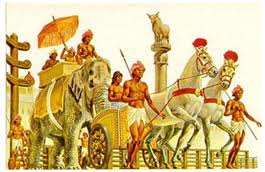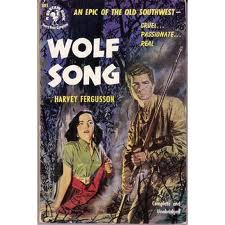I should be sorting books, pricing them, perfecting window displays, figuring out where to advertise, how much to spend, and doing my taxes. But instead I am reading “Public Finance in Ancient India,” by K.R. Sarkar? Now, I know what you’re thinking: “Really, Sarkar? Didn’t everyone read that by sophomore year?” But, let’s face it – I was one of those iconoclasts who didn’t think it was important to follow the core curriculum. Was I ever wrong! Ancient India had one fantastic financial system.

This is what happens when you find yourself and 20,000 books sharing the same six rooms, day after day. The books that become the most interesting are those that seem the least likely to sell. Why is that? Because one needs to find a justification for every book that takes up shelf space. That is why I have an illustrated manual of slide rule instructions on my desk. And the Official Guide to Railway and Steam Navigation from 1938 (Every route and line included: six trains a day from Pittsboro on the Seaboard Railway). If I am going to put them on the shelves, I have to convince myself that someone might want them. So here I am deep in ancient India, where the sequester is unknown, but public borrowing is highly advanced. Says the king: “I seek your wealth for concerting measures for your protection. When the danger passes I will repay you for what I take now. Our foes will not return what they will take from you.” This was in addition to the customary taxes – land tax, building tax, water tax, excise tax, salt tax, port tax, celebration tax, excess-profit tax – which made ancient India such a modern civilization. The Indian army was a marvel in four parts: infantry, cavalry, elephants and chariots. Someone had to fund and protect the forests that served as captive breeding grounds for the 6,000 strong active pachyderm force. All this is documented in extensive records, analyzed and summarized by Sarkar in 1978 for the benefit of, well, several readers at the very least, now including me and, possibly, the lucky customer who I can persuade to read this popular favorite.
 And that is my job in a nutshell. It’s not necessary for anyone to shill for Hilary Mantel or David McCullough or J.K. Rowling. Hemmingway and Steinbeck don’t need my help. But there are thousands of writers who don’t stand a chance without someone taking up for them. Which ones? That’s the question. Last week a customer who had bought Paul Horgan’s two-volume history of the Rio Grande (Pulitzer Prize winner 1955) mentioned how he loved the history of the old West but didn’t think there was much Western fiction that measured up. Had he heard of Harvey Fergusson, I asked. On the shelf with Louis L’Amour and Zane Grey, we found a copy of “Wolf Song,” which was once popular, but not in my lifetime – maybe not since Gary Cooper starred in the silent film adaptation in 1929. Anyway, I found the right home for “Wolf Song,” and perhaps, in time, I’ll place “Public Finance in Ancient India,” with a loving family.
And that is my job in a nutshell. It’s not necessary for anyone to shill for Hilary Mantel or David McCullough or J.K. Rowling. Hemmingway and Steinbeck don’t need my help. But there are thousands of writers who don’t stand a chance without someone taking up for them. Which ones? That’s the question. Last week a customer who had bought Paul Horgan’s two-volume history of the Rio Grande (Pulitzer Prize winner 1955) mentioned how he loved the history of the old West but didn’t think there was much Western fiction that measured up. Had he heard of Harvey Fergusson, I asked. On the shelf with Louis L’Amour and Zane Grey, we found a copy of “Wolf Song,” which was once popular, but not in my lifetime – maybe not since Gary Cooper starred in the silent film adaptation in 1929. Anyway, I found the right home for “Wolf Song,” and perhaps, in time, I’ll place “Public Finance in Ancient India,” with a loving family.
